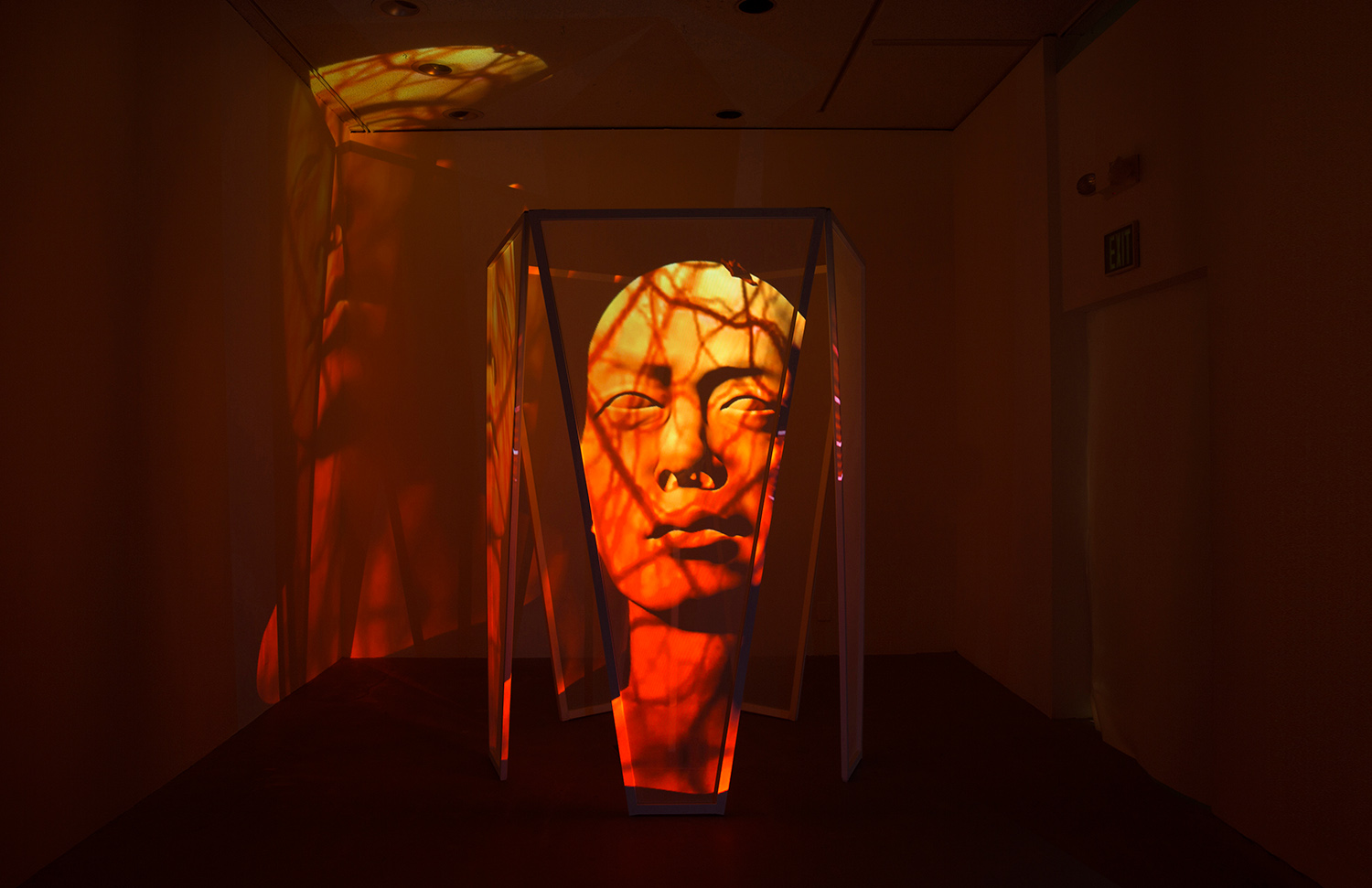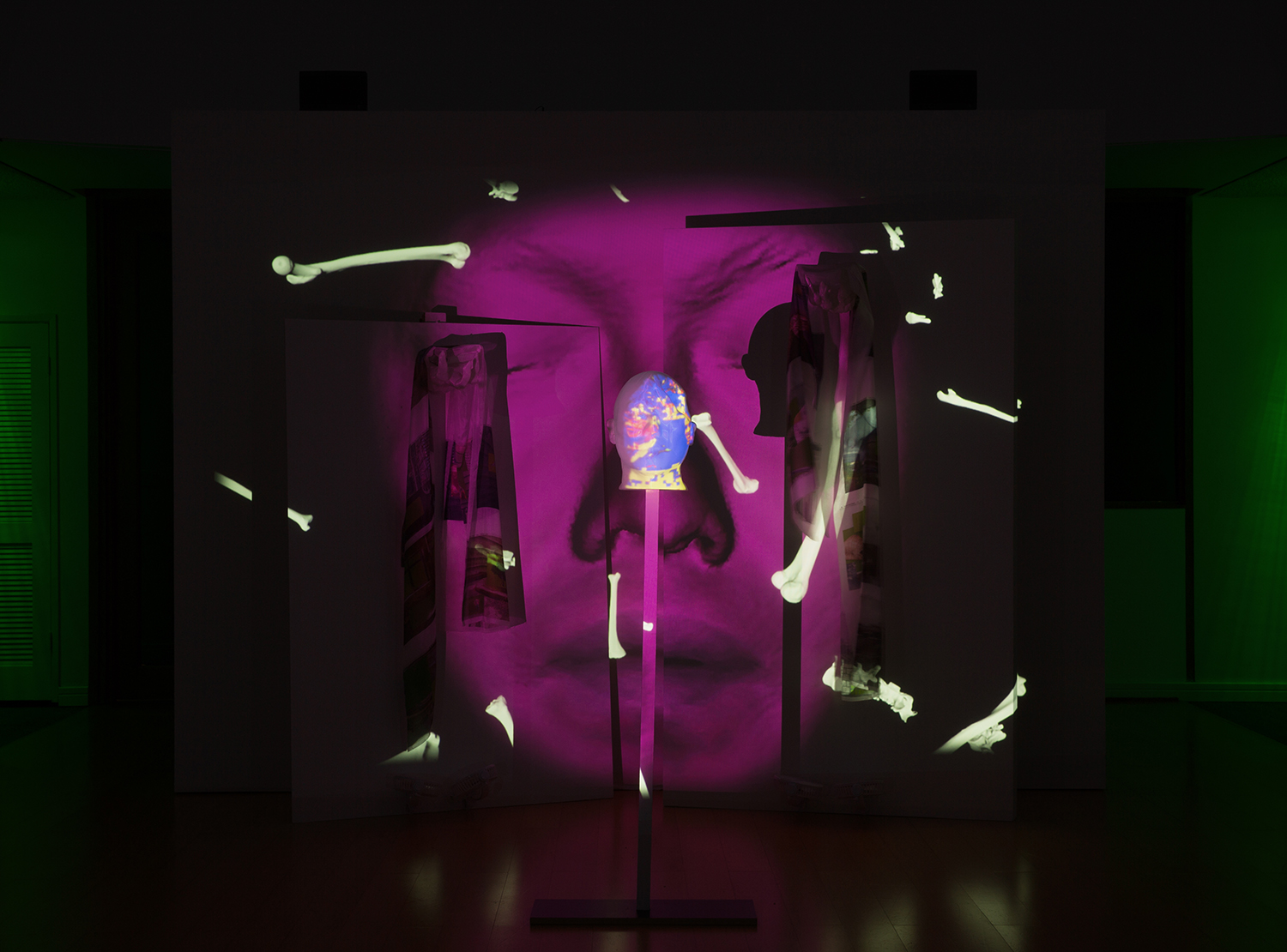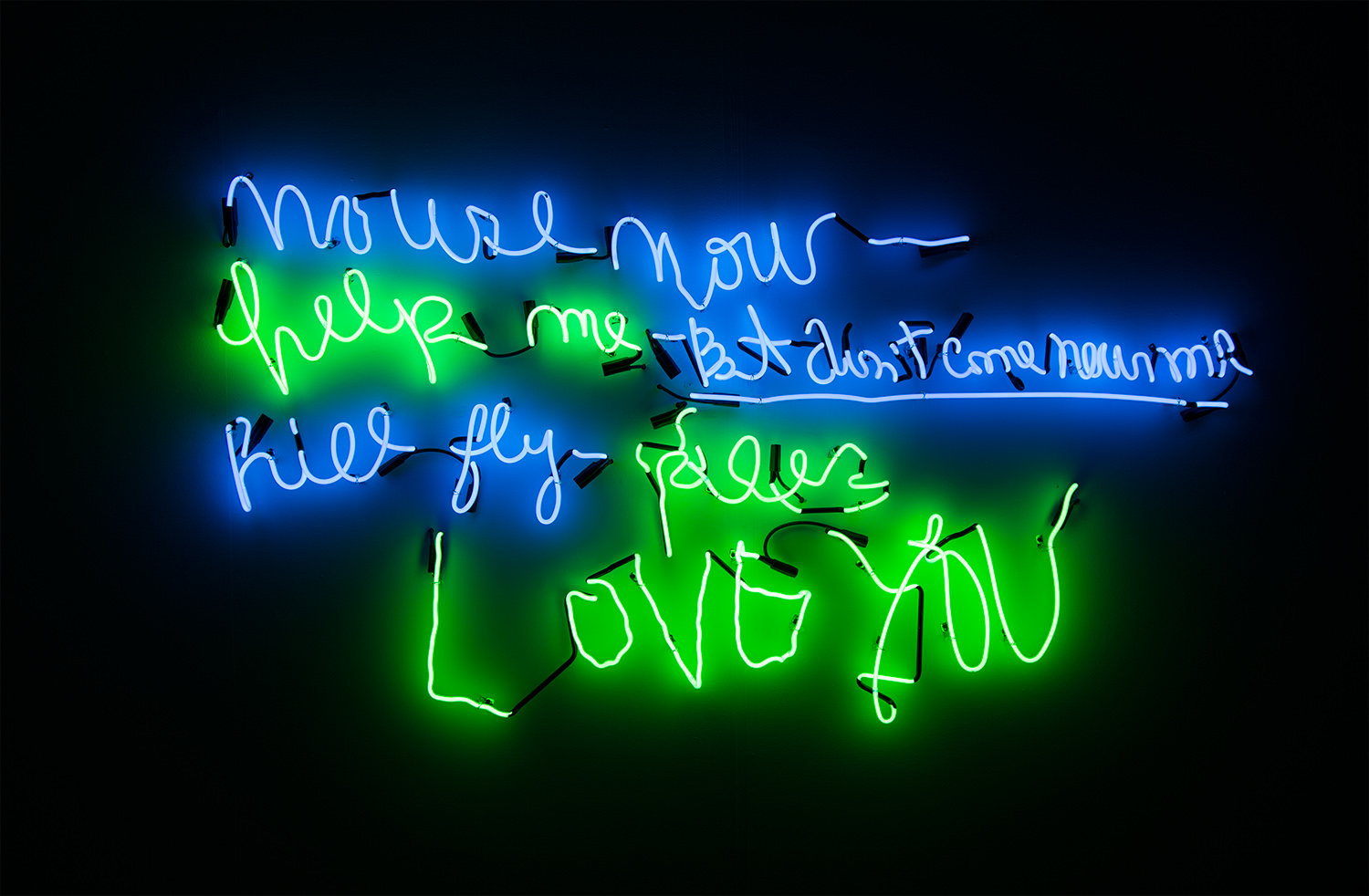Greene Exhibitions, Los Angeles
November 14, 2015 – January 9, 2016
“Telephones and telephone bells have always made me uneasy. Years ago, when they were mostly wall fixtures, I disliked them, but nowadays, when they are planted in every nook and corner, they are a downright intrusion. We have a saying in France that a coalman is master in his own house; with the telephone, that is no longer true, and I suspect that even the Englishman is no longer king in his own castle.” – George Langelaan “The Fly,” 1957
Anxiety. It is how George Langelaan begins his short story, “The Fly,” published for the first time in Playboy in June of 1957. With the successful launch of Sputnik only months away, the West would have another sign of the dreaded spread of communism and the Soviet ascent towards superiority in the world. The following summer, Kurt Neumann’s film based on Langelaan’s short story premiers in San Francisco. The story revolves around an inventor who has created a machine that includes two chambers: one that disintegrates matter that is instantaneously transported across space to a second chamber that perfectly reintegrates and restores it to its original form. Langelaan’s characters wonder if this may be the most important modern invention until a fly is trapped in the disintegration chamber with the scientist as he attempts to teleport himself. The two bodies are fused together and a hybrid being is created: The Fly.
In David Cronenberg’s 1986 “The Fly,” the anxiety of the nuclear age and a Soviet takeover was replaced by the fear of our vulnerability to disease. In the year prior to the film’s release, at least one HIV case had been diagnosed in each region of the world. Cronenberg updates the previous film’s disintegration/reintegration chambersto prominently feature the scanning and recording of a living being’s composition to include the structure of its DNA. The audience witnesses The Fly develop from an initially undetectable corruption of its body’s genetic material. The genius is patient zero.
For the artist’s third solo exhibition with the gallery, Peter Wu has created a sequel to the original “The Fly” films, which continues his practice of pursuing the potential of recontextualized signs. “Rise of the Fly” dematerializes the images, sounds, scores, and themes of the original films into a reconstituted body using the language of cinematic montage and painting. The paintings are precisely illuminated by projections intermittently integrated with Wu’s sequences of video montages. The fallen hero of The Fly is absent save for its fragmented image throughout the paintings, projecting the contemporary anxiety of having a window into everywhere that you are, and most saliently are not.
Rise of the Fly, 2015
5 – 70 x 50 inches paintings (The Fly X, The Fly XXV, The Fly XII, The Fly XVI, The Fly XXII),
ink and acrylic on cotton, mapped HD video projections with sound (TRT 15 min loop)
140 x 250 inches overall
Installation view

The Fly X (Descendant), 2015
Ink and acrylic on cotton
70 x 50 inches

The Fly XXV (Descendant), 2015
Ink and acrylic on cotton
70 x 50 inches

The Fly XII (Descendant), 2015
Ink and acrylic on cotton
70 x 50 inches

The Fly XVI (Descendant), 2015
Ink and acrylic on cotton
70 x 50 inches

The Fly XXII (Descendant), 2015
Ink and acrylic on cotton
70 x 50 inches

















